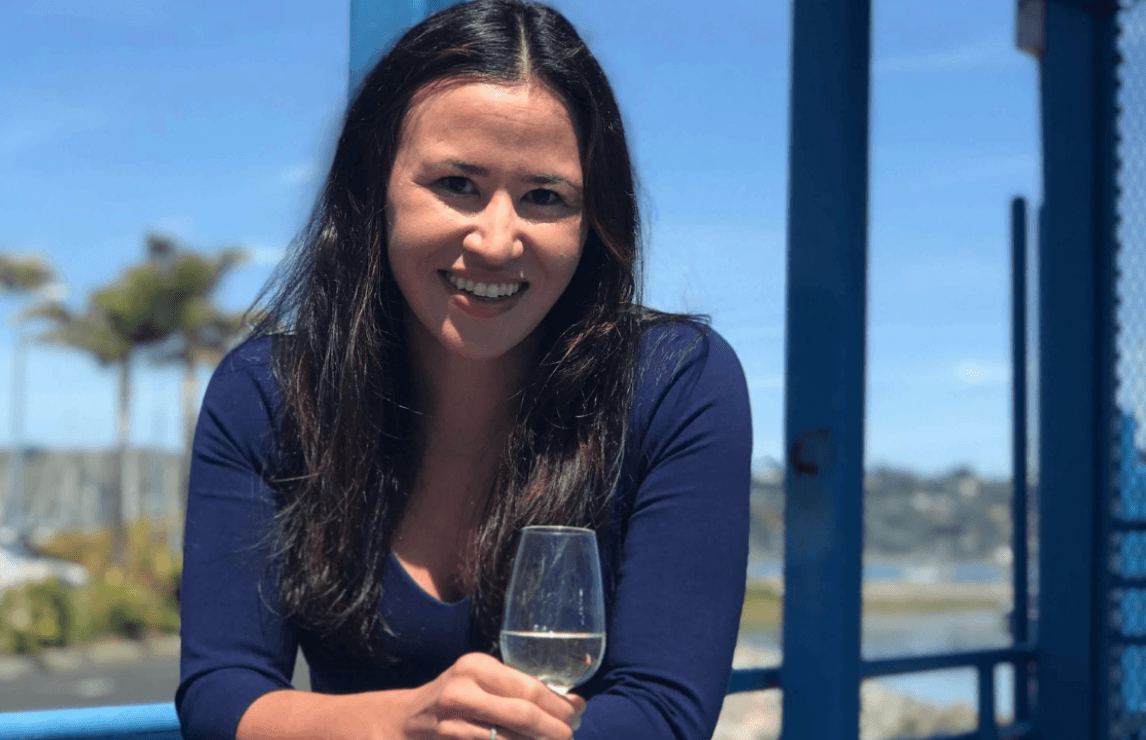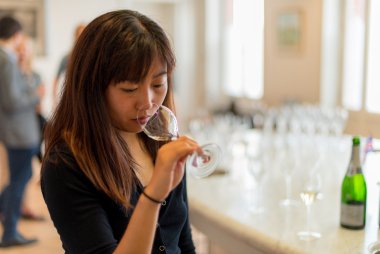Future 50 Q&A: Monica Samuels
The Future 50 is a new initiative created by WSET and IWSC to select 50 future influencers of the global drinks industry. Find out more and view the final list here.
Monica Samuels is head of sake and spirits at Vine Connections, a US-based boutique importer of South American wines and Japanese sake. She also teaches WSET sake courses, judges sake in international competitions and writes for industry publications such as Sake Today.
What do you do?
I am the director of sake and spirits for Vine Connections, a US importer of 18 sake breweries throughout Japan and one from Brooklyn, NY; we also sell Japanese craft gin, whisky, and shochu. We distribute in all 50 states.
How was your work affected by the coronavirus outbreak?
As with most premium sake importers, the majority of our business was in restaurants, so we have taken a substantial hit financially. Fortunately, we were able to make it this far while retaining all of our employees, but it has been a very uncertain time. We also had a lot of sake that was meant to go exclusively to restaurants, so we had a lot of inventory that we were very worried about moving through while at peak freshness.
How did you spend your time during the lockdown?
At the beginning our priority was to figure out how to support our restaurant partners during a time when they could only offer takeout and delivery; we donated a lot of sake cans so they could offer single servings for people ordering food to go, and we helped to design virtual tasting experiences and sake flights to be enjoyed at home. Then we concentrated on increasing the presence of our brands online. Most retailers in the US, even if they carry sake, don’t always have it available online, so a lot of our time was spent trying to fix this.
My time was also spent doing as many virtual experiences as possible – webinars with brewers in Japan, Instagram Live chats with industry friends and restaurant customers, Zoom seminars with restaurant staff currently out of work, FaceTime calls with customers enjoying sake at home… it was a very educational time for me, to learn about all of these platforms and understand more about what the consumer is looking for. There was also a great opportunity to collaborate with chefs and sommeliers on these events to bring people more of a restaurant experience while stuck at home.
What are you most looking forward to as the lockdown eases?
Being closer to the consumer. As we are distributed in all 50 states, there are so many hands that touch our sakes before they are poured into someone's glass. Distributors pick up from our warehouse, sake is unloaded by warehouse staff, then trucks send those to restaurants, restaurant staff store our sake, and then it’s served to the consumer. I have always viewed domestic travel as necessary to make sure that all these people are educated on how to best to care for our products, and to confirm with the consumer as to how they are enjoying them – it’s very educational for me and helps me look forward to new products we will bring in. Although there is so much we can accomplish virtually, the peace of mind of checking on my products in person is hard to replace.
Do you have any updates since you won the Future 50 award last year?
Along with continuing to carefully grow our sake portfolio so that we have time to develop a brand and marketing strategy for each producer, we are launching a Japanese craft spirits portfolio in 2020.
What’s been your favourite drink of 2020?
I am very excited about the trend of lower alcohol genshu sake in Japan. The best sake I’ve had in 2020 so far is one from Kojima Sohonten in Yonezawa, Yamagata, called “untitled”.
What is your proudest achievement so far?
Changing our company culture to bring sake into main focus; at one point, our overall company sales were 14% sake, 86% wine. Now we are 45% sake, 55% wine, which is something our owners could never have envisioned when first importing sake into the US in 2001.
Do you have any advice for people starting out in the drinks industry?
A bartending job is a great place to start! You will meet so many wine, sake and spirits sales reps to network with and advise you of open positions.
Have you got any particular ambitions or plans in motion?
Continuing to represent producers who are expanding the industry, and collaborating more with these producers to change people’s preconceived notions about sake. It is a broad goal, but at this point we represent more female sake producers than any other US importer, as well as renegade producers experimenting with things new and old, from using white koji and olive yeasts in sake making to reviving heirloom rice strains that have been extinct in Japan for over a century. The quality of sake made in Japan continues to improve year over year, which motivates me to work harder to innovate and find new ways to introduce people to sake who think they already know what it is and what it can be.
What excites you in the drinks industry right now?
The presence of umami across all drinks categories. Cocktails in the US used to skew overwhelmingly sweet, and sake trends were heavily leaned towards tropical fruit and bubble-gum profiles. Now there is an exciting presence of savoury cocktails fuelled by miso, pickling brine, dry sherry, and a slew of other ingredients to add complexity, as well as an appreciation of sake styles like kimoto, yamahai, and koshu.
How has working with IWSC helped you?
My evolution from Associate Judge to Panel Chair in the IWSC Sake category has been an incomparable learning experience. Being part of a community that includes mentors who first sparked my interest in sake, as well as people still getting started in the category, is inspiring in so many ways. Seeing how fairly these products are treated by a panel of judges, and looking back afterwards to see what received what medal and why, has also helped me in guiding my producers on market trends and desires and better selecting products for export.



